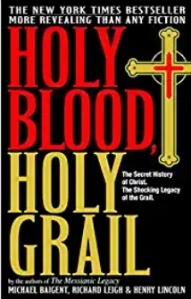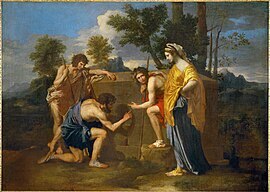Those ubiquitous Templars
 I’m re-reading for the second or third time Holy Blood, Holy Grail by Baigent, Leigh, and Lincoln because the subject matter is fascinating. I’ve lost track of all the Templar-related books I’ve read, not counting Dan Brown’s The Da Vinci Code.
I’m re-reading for the second or third time Holy Blood, Holy Grail by Baigent, Leigh, and Lincoln because the subject matter is fascinating. I’ve lost track of all the Templar-related books I’ve read, not counting Dan Brown’s The Da Vinci Code.
When I was twelve, I joined the DeMolay Club affiliated with my school because I liked its values which are related to the values of the Masons. Unfortunately, I had to leave when their chosen meeting day conflicted with the meeting day of my Scout group. Jacques de Molay was the last grandmaster of the Knights Templar before the group was virtually destroyed by the French king and the Pope in 1307.
Prior to that, when visiting my grandparents in Illinois, I first heard those values from my grandfather who was the commander of the local Masons which were affiliated with The Knights Templar of North America. The commandery, the building of the local Ilinois chapter, was a wonderous place and I was tempted to become a Mason after hearing about the values of the group. I chose instead to join the Rosicrucian Order because of its strong commitment to esoteric teachings. I did not think I should also become a Mason, though they have my support.
 History Channel Photo
History Channel Photo
Now as I watch the ongoing coverage of the treasure hunters on Oak Island, I find it interesting that the team doing the work there is excited about the possible Templar connection to the treasure that might have been hidden there. I have zero interest in treasure, but I’m drawn to this show because I’m curious about the potential connection between the Knights Templar and what, if anything, is ultimately found on this privately-owned island off the coast of Nova Scotia.
 Re-reading this book brings back many memories of the research I did in the past into such subjects as the work of artist Nicolas Poussin (1594–1665), especially his two paintings labelled Et in Arcadia ego which are also mentioned in the books of the Francis Bacon Research Trust. Arcadia represents, is it said, heaven on earth and yet the coffin in the painting suggests the presence of a darker side. The prospective bloood line of Christ, notably in the French Merovingan dynasty and the Plantard family is also interesting.
Re-reading this book brings back many memories of the research I did in the past into such subjects as the work of artist Nicolas Poussin (1594–1665), especially his two paintings labelled Et in Arcadia ego which are also mentioned in the books of the Francis Bacon Research Trust. Arcadia represents, is it said, heaven on earth and yet the coffin in the painting suggests the presence of a darker side. The prospective bloood line of Christ, notably in the French Merovingan dynasty and the Plantard family is also interesting.
How many of these mysteries are real and how many are pure fiction. I may never know. But I like delving into real or imagined secrets.
–Malcolm



